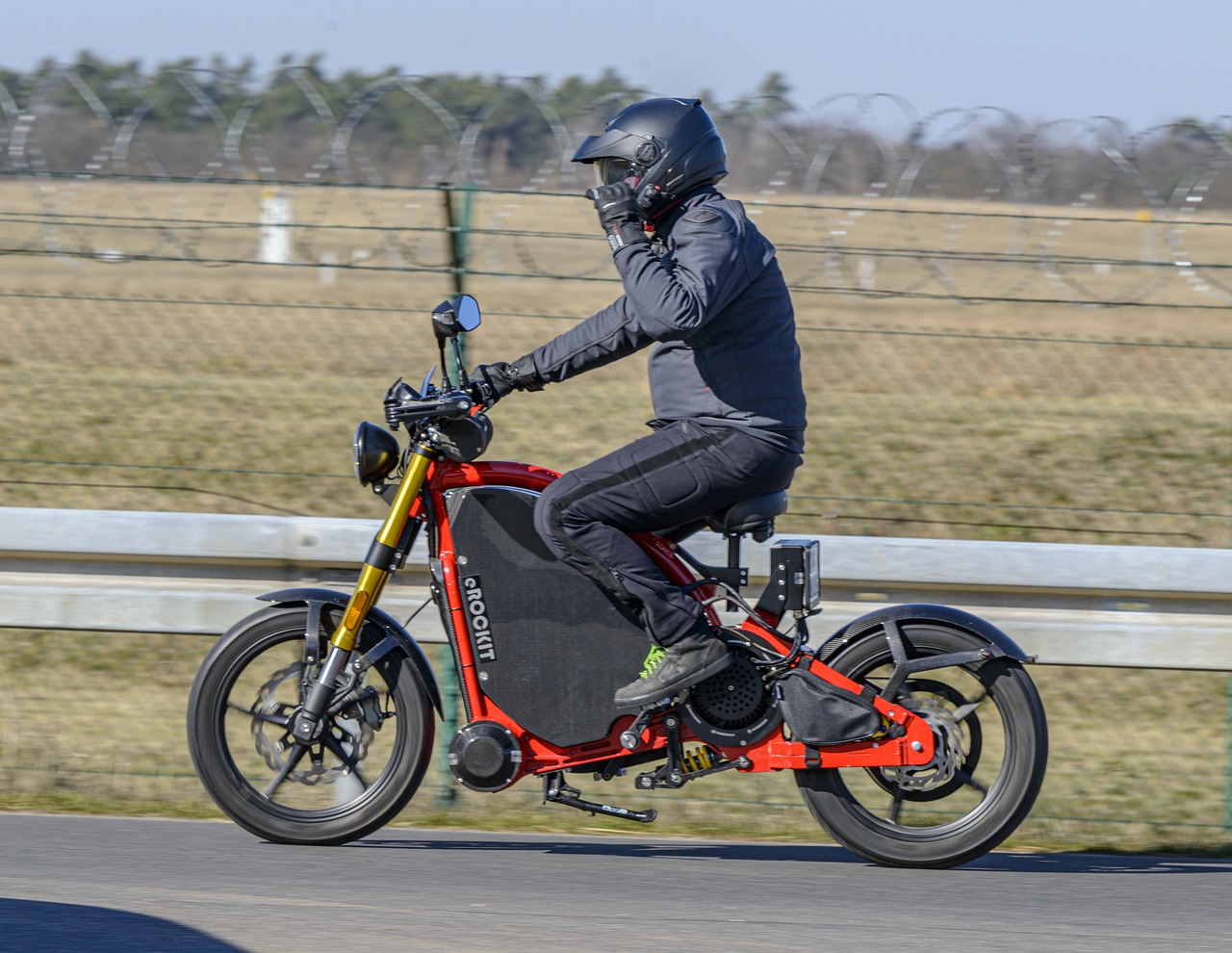You’re about to take a thrilling adventure into the great outdoors with your e-bike, but first, let’s tackle the essential task – successfully and safely transporting it. This comprehensive guide will enlighten you on ways to do just that, focusing on common queries from beginners, and offering tailored advice for those planning to hit off-road trails or camp with their e-bikes. Get ready to learn everything you need to know about getting your e-bike from A to B in the most efficient way possible.

This image is property of pixabay.com.
Understanding E-bike Specifications
E-bikes, also known as electric bikes, have seen a significant surge in popularity due to their impressive convenience and efficiency. They offer the best of both standard biking and electric propulsion, providing you with the power to navigate hills and long distances easily. But before you can consider transporting your e-bike, you need to understand its specifications, notably the capacities, features, weight, and size.
Capacities and features of different e-bikes
E-bikes come equipped with various capacities and features that categorize them. Some common features include various assist levels, throttle capabilities, and speed sensors. The capacity of your e-bike’s particular model mainly refers to its range, the maximum distance your e-bike can travel on a fully charged battery. Furthermore, the bike’s battery life and charging times significantly impact its usability for extended rides or multiple short trips.
Weight and size considerations for transportation
When considering transportation, the size and weight of your e-bike matter a lot. E-bikes tend to be heavier than regular bikes due to the added weight of the battery and motor, typically weighing between 50-70 pounds, sometimes even more. This extra weight can pose challenges during transportation, especially when lifting the e-bike onto a bike rack. As for the size, remember that some e-bikes are larger than typical bikes, particularly cargo or fat-tire e-bikes.
Evaluating Your Vehicle’s Capability
Having examined your e-bike’s specifications, it’s time to turn towards your vehicle. Here, you should assess available space, decipher your vehicle model’s maximum carry load, and evaluate the possible modifications you may need.
Assessing available space
Your vehicle’s available space is a crucial factor when choosing a suitable bike rack and planning for bike transport. Make sure there is enough room for the e-bike rack and the e-bike itself without obstructing the rear view or the vehicle’s operation.
Max carry load according to vehicle model
Different vehicle models can accommodate different weight loads. Therefore, you need to check the vehicle’s maximum roof and rear load capacity, especially considering the heavier weight of e-bikes. Always stay within this weight limit to maintain safe transportation.
Possible modifications needed
If your vehicle isn’t already equipped for an e-bike rack, you might need some modifications. Various attachments are available, including roof racks, hitch receivers, or trunk harnesses. Always confer with a professional before making any permanent modifications to your vehicle.
Choosing the Appropriate Bike Rack
Selecting an appropriate bike rack is crucial in securing your bike during trips. There are multiple factors to take into consideration, including the rack’s design, weight, material, and potential attachment points.
Types of bike racks compatible with e-bikes
There are different types of bike racks – trunk, roof, or hitch bike racks, developed to hold e-bikes securely. The most recommended for e-bikes is the hitch bike rack due to its sturdiness and direct attachment to the vehicle’s frame, providing additional support that can handle an e-bike’s added weight.
Factors to consider when buying a rack (e.g. weight, material, attachment points)
When buying a rack, the weight capacity should be the first consideration due to your e-bike’s increased weight. Decide between a tray-style rack or hanging rack, with the former typically able to support more weight. Check the rack material as well; steel and aluminum are sturdy options. Make sure to verify the attachment points of the rack to your vehicle for secure and reliable installation.
Proper Installation of the Bike Rack
After purchasing the right bike rack, it’s important to ensure it’s correctly installed.
Step-by-step guide to installing a bike rack
Begin by following the manufacturer’s guidelines provided within the box; these should provide detailed steps on how to proceed. For hitch bike racks, slide the hitch into the vehicle’s receiver, secure it using the pin and clip, and make sure it’s tightly attached. If it’s a trunk or roof rack, ensure the straps or suction cups are strongly secured and that the bike carrier is firm.
Ensuring secure and firm attachment
After installing, double-check to ensure everything is firmly secured. Shake the rack slightly to verify its tightness. Remember, loose attachments can result in a bike rack that wobbles while driving, which poses a risk to both your e-bike and your vehicle.
Prepping the E-bike for Transportation
Before you transport your e-bike, you need to make sure it’s ready for the journey to prevent potential issues.
Removing or securing loose parts
Remove or secure any loose parts on your e-bike to prevent them from falling off during transit. This could include panniers, water bottles, or front wheels (on some models).
Charging the battery
It’s not necessary to fully charge your e-bike’s battery for transportation, but it can be beneficial to top it up, especially if you plan to ride immediately upon arrival. Some e-bikers prefer to remove the battery altogether throughout the transportation process to reduce weight and potential damage.
Basic maintenance checks before transportation
Perform basic maintenance checks – such as tire pressure, brake performance, and all moving parts – before transportation. You’d hate to arrive at your destination only to find your e-bike needs repairs or attention.
Mounting the E-bike on the Rack
Now that your vehicle, bike rack, and e-bike are ready, it’s time to mount your bike. Make sure you do it correctly to prevent any damage to your bike or vehicle during transit.
How to correctly load the e-bike
Before loading your e-bike, double-check the maximum weight capacity of the rack. Always lift your e-bike carefully onto the bike rack, ideally with someone’s help due to its added weight. It’s better if the heaviest part of the bike, usually the part with the battery and motor, is closest to the vehicle.
Securing the e-bike on the rack
After loading the e-bike on the rack, it’s time to secure it firmly. Use the straps, bars, and other locking mechanisms that come with the rack. Ensure your bike doesn’t wobble and is firmly held in place. Remember, the idea is to minimize movement during the journey.
Safety Measures During Transport
In ensuring your bike’s safety during transportation, there are certain measures you can follow.
Regularly inspecting attachment during journey
Regularly stop to check that your bike is still secure. This is particularly important for long rides, where vibrations and bumps can potentially loosen the attachments.
Maintaining safe driving behavior
While driving, don’t forget that you have an extra load attached to your vehicle. Maintain good driving habits, including slower turns, braking earlier, and avoiding sudden stops or accelerations to prevent swinging or tilting of your e-bike.
Appropriate covers to protect from weather
Consider investing in a high-quality cover to protect your e-bike from sun, rain, and road debris while in transit. Ensure the cover does not obstruct the vehicle’s headlights, indicators, or number plates.
Dealing with Breakdowns or Accidents
Hopefully, your transportation goes smoothly, but it’s always prudent to prepare for potential issues such as breakdowns or accidents.
Emergency procedures
In the case of an accident or breakdown, safety first. Carefully remove your bike from the roadway to prevent further damages or accidents. Following that, assess the situation and decide on the best way to proceed, which may include calling for roadside assistance or performing minor fixes yourself.
Carrying a basic toolkit for maintenance and repairs
It’s beneficial to carry a basic toolkit, including a tire repair kit, wrench, and air pump, on your journey. This can help you perform minor maintenance and repairs on the road.
Insurance coverage for accidents during transport
Having suitable coverage helps cover any damage costs in the unfortunate event of an accident. Check with your insurance company to see if your policy covers e-bikes during transportation.
Transporting E-bike on Public Transportation
At times, it may be more feasible to transport your e-bike on public transportation. However, this comes with its own set of considerations and rules.
Understanding public transportation policies regarding e-bikes
Each public transport system has its own rules regarding bike transportation. Some allow bikes during off-peak hours, others require them to be folded or disassembled, while others may not allow bikes at all. Check the specific rules of your local system before you travel.
Best practices for carrying e-bike on train, bus, or ferry
When taking your e-bike on public transportation, be mindful of other passengers. If possible, choose less crowded times to travel and always have full control of your bike, especially when the vehicle is moving. Remove the battery to make your e-bike lighter and easier to manage, if allowed and possible.
E-bike Transportation for Off-road Applications
You might also consider transporting your e-bike for off-road applications, such as trail riding or camping. However, this poses distinct challenges and requirements.
Methods for safely transporting e-bikes off-road
One of the safest methods of transporting e-bikes off-road is to use a hitch-mounted tray-style rack with additional locking features for added security. This gives your e-bike a stable and secure platform during the more extreme movements commonly experienced off-road.
Additional equipment necessary for off-road transport
Additional equipment could include a bike cover for weather protection, extra straps and locks for enhanced security, and potentially a spare tire in case of unpleasant surprises on the rocky terrain. Remember to carry your off-road essentials, such as a helmet, hydration pack, and first-aid kit as well.

